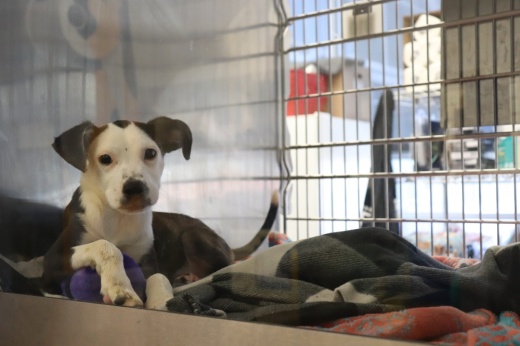After mounting criticism of animal treatment and years of pandemic disruptions, Austin Animal Center leadership is working to improve operations at the city shelter as it reaches a "crisis point."
As of March 20, dog intake was closed—even for emergency cases.
Shelter leaders urged Austinites to consider fostering or adopting pets in the face of overcrowding.
In the meantime, other shelter and animal group members say they are left to deal with the overflow.
“I feel they put a tremendous burden on the public,” said Beverly Luna, Austin Lost and Found Pets group director.
An audit from last fall outlined several issues, including poor conditions and conflict with community members, that officials plan to address this year while maintaining the city’s no-kill policy.
Current situation
The Austin Animal Center has experienced a surge in demand, cramped quarters and staffing issues; as a result, the city will bring in a third party this year to oversee changes.
“We’re always in a state of overcapacity. That is a fact of life since the pandemic. We’re no different than any other shelter—with the exception of all of the other shelters in Texas [that] have lost their no-kill status,” Chief Animal Services Officer Don Bland said. “That’s a whole other realm that we have to deal with that others don’t.”
People are adopting much less, he said, while pet spaying and neutering dropped as a result of the pandemic. Even puppies, typically the most desired adoptions that quickly moved through the shelter, are now experiencing longer kennel stays, Bland added.Services explained
Austin Animal Services manages the city’s East Austin shelter, animal control and protection services, and response to animals’ disease and dangerous animals.
The center is comparatively one of the best-funded animal services and shelter systems among large Texas cities, with more than 120 staff and a $21 million budget that’s grown nearly 50% in 5 years.
A large portion of that budget goes to salaries and day-to-day operations. Despite the increased budget, some animal groups say they're still left to care for a surge of animals in the community.
“The taxpayers are paying twice. They’re paying the $21 million [Austin Animal Services budget] and they’re paying out of their own pockets,” Luna said.Also of note
Another issue officials took on this year was the rising number of animals posing risks to the community.
City Council signed off on an expanded national-standard scale for measuring dog bites in February, and a policy change that could make it easier to put down dangerous animals.
The change came after the number of severe biting incidents in Austin rose nearly 150% since 2018, and as hundreds of dogs with biting histories ended up leaving the city shelter or being adopted.
Bland said the change won’t significantly impact capacity or the number of euthanasias performed. However, some residents are worried the practice could lead to more animals being put down.A closer look
The center has also faced its share of negative perceptions from the community, especially after last year’s audit dinged the facility’s operations, its handling of capacity constraints and cleanliness.
The audit also advised re-evaluating the 95% no-kill benchmark against practical needs of the center’s capacity, though Bland said it is “the last thing” officials hope to consider.
Well over 10,000 animals still arrive at the city center annually, amid a trend of dipping adoption rates and fewer missing animals returned to owners. At the same time, other shelters, foster programs and local groups deal with thousands of arrivals of their own.
The ongoing response to last year’s audit will involve work with Austinites to balance their expectations with the city’s as a new strategic plan is charted out.What's next
Austin Animal Services is working through the updates laid out in the audit report, which should be completed before this winter.
Officials anticipate the center’s possible expansion in response to growth and demand—although any such service extensions are likely still a ways off. Staff have explored other sites east and west of I-35 as well as an expansion on Levander Loop as options so far.
Community members interested in learning more about the animal center, adopting and volunteering can do so at www.austintexas.gov/austin-animal-center. A coalition of local animal organizations is also planning an April community forum to discuss local issues.





